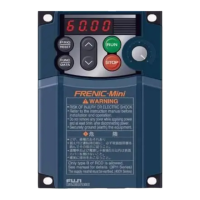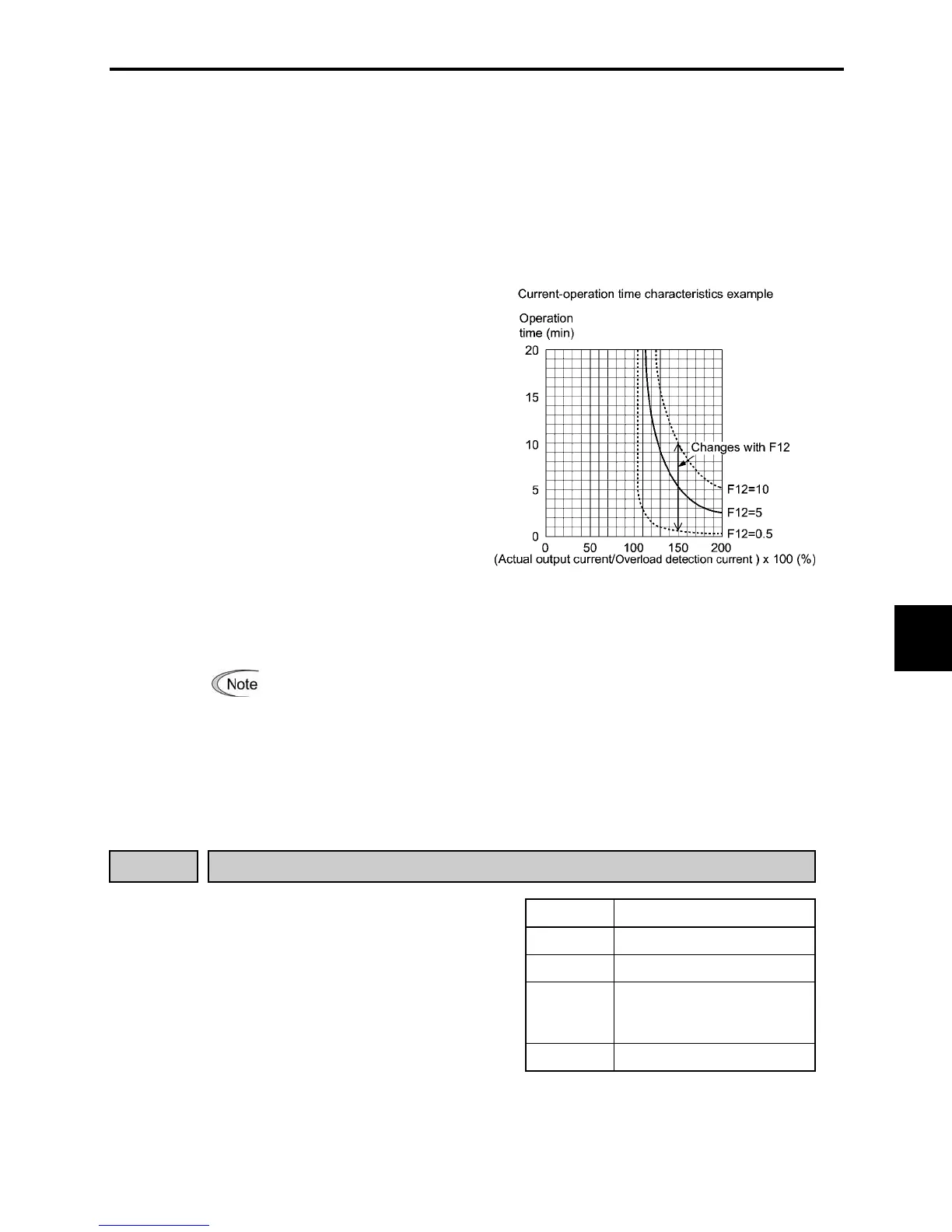9.2 Details of Function Codes
9-19
Chap. 9 FUNCTION CODES
Thermal time constant (F12)㩷
F12 specifies the thermal time constant of the motor. The inverter uses the time constant as an
operation period of the electronic thermal motor overload protection. If 150% of the overload
detection current specified by F11 flows continuously, the inverter activates the electronic
thermal motor overload protection during the specified operation period.
For Fuji general-purpose motors and other induction motors, set 5 minutes (factory default) to
F12.
- Data setting range: 0.5 to 75.0 (minutes, in 0.1-minute increment)
(Example) When "5.0" (5 minutes) has
been set to F12
As shown at the right, if 150% current
of the operation level flows
continuously for 5 minutes, the motor
overload alarm will be activated (alarm
code "0L1"). If 120% current flows, the
alarm will be activated after approx. 13
minutes.
The thermal time constant includes the
time interval from the time when actual
current flowing into the motor exceeds
the allowable continuous current (100%
of the rated current) to the time when
the current reaches 150% of the rated
current. Therefore, the actual time when
the alarm is issued will be earlier than
the time specified by F12.
Typical operational characteristics of electronic
thermal motor overload protection
When an inverter drives the motor with a very frequent running/stopping operation,
the loaded current to the motor may fluctuate largely and enters the short-time rated
current range (100% or more) of the motor repeatedly. This may cause an abnormal
operation of the electronic thermal motor overload protection (e.g., for an
externally-powered forced ventilation fan).
To prevent such a problem, calculate the "equivalent RMS current" and keep the
loaded current within the motor rated current. Refer to Chapter 7, Section 7.1.3.4
"Calculating the RMS rating of the motor."
F14 Restart Mode after Instantaneous Power Failure
Data for F14 Function
0 Trip immediately
1 Trip after recovery of power
4
Restart at the frequency at
which the power failure
occurred
Selects the action of the inverter to be
followed when an instantaneous power
failure occurs.
5 Restart at the start frequency
If the inverter detects that the DC link bus voltage drops less than the specified undervoltage
limit, it interprets the state as an occurrence of an instantaneous power failure. However, if the
inverter runs with a light load and the period of the power failure is short, then it does not detect
the power failure and continues to run.

